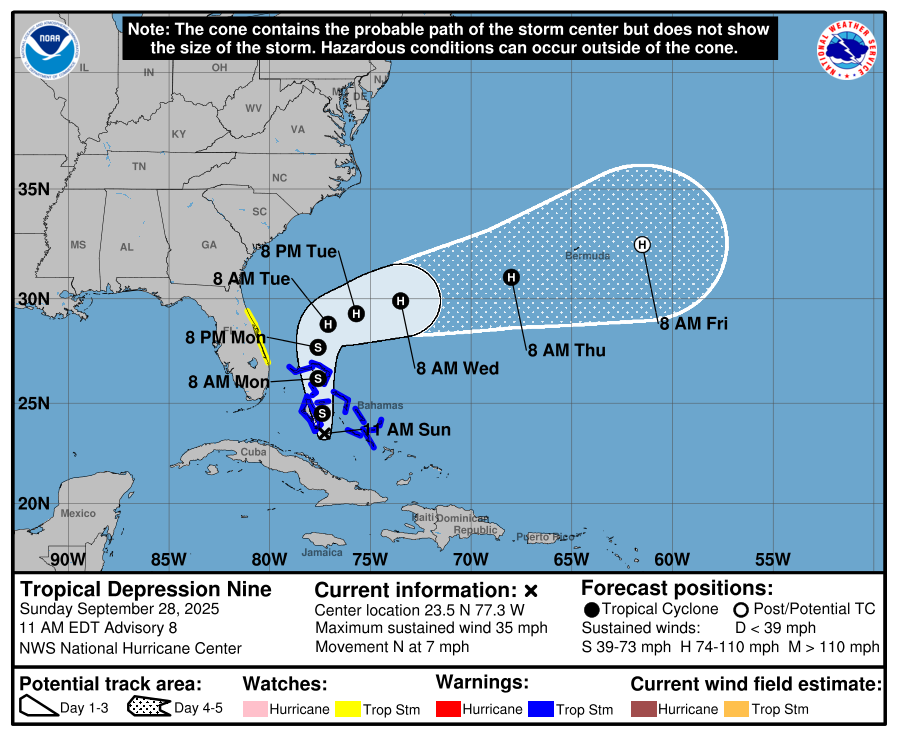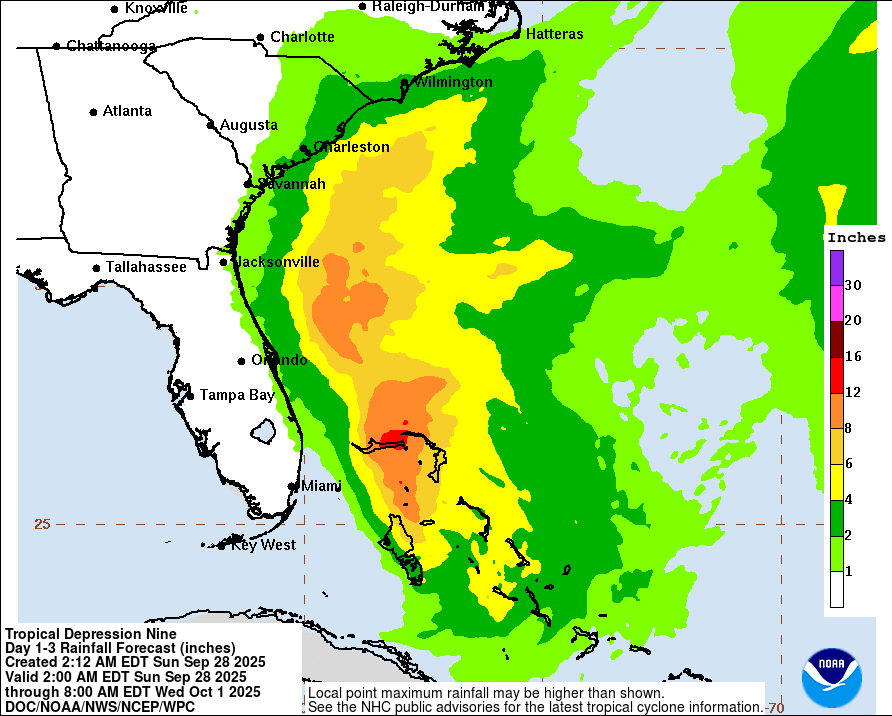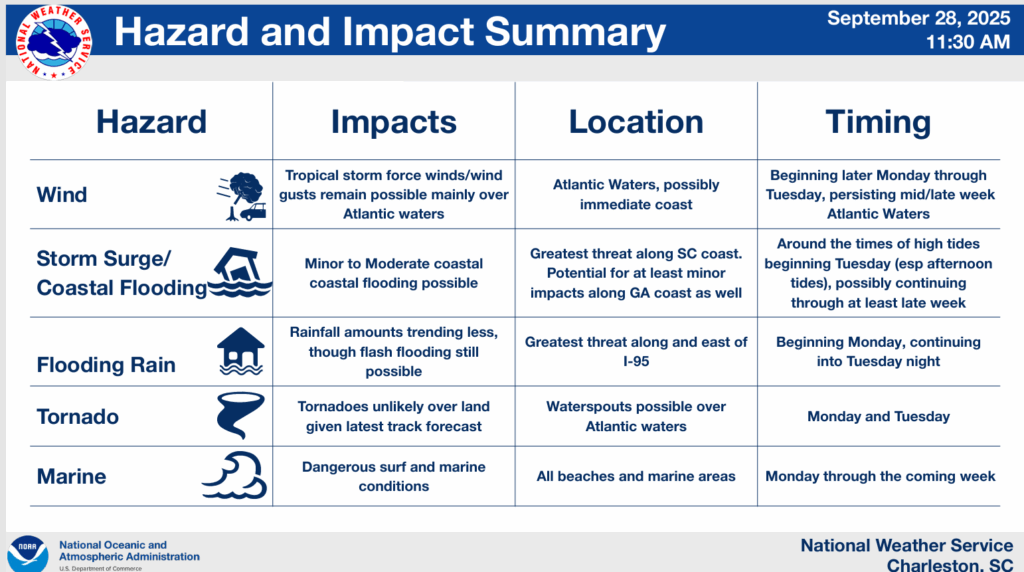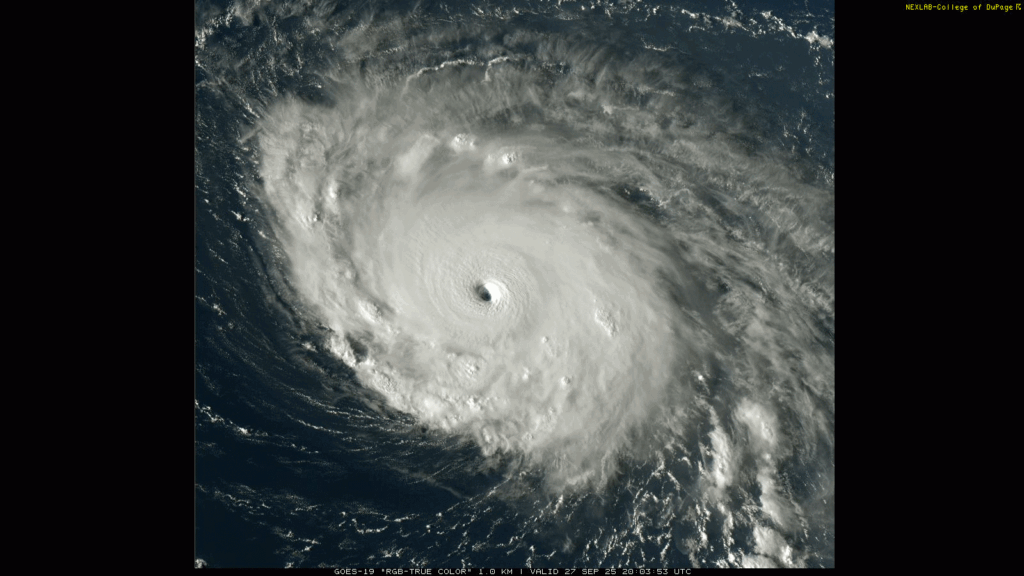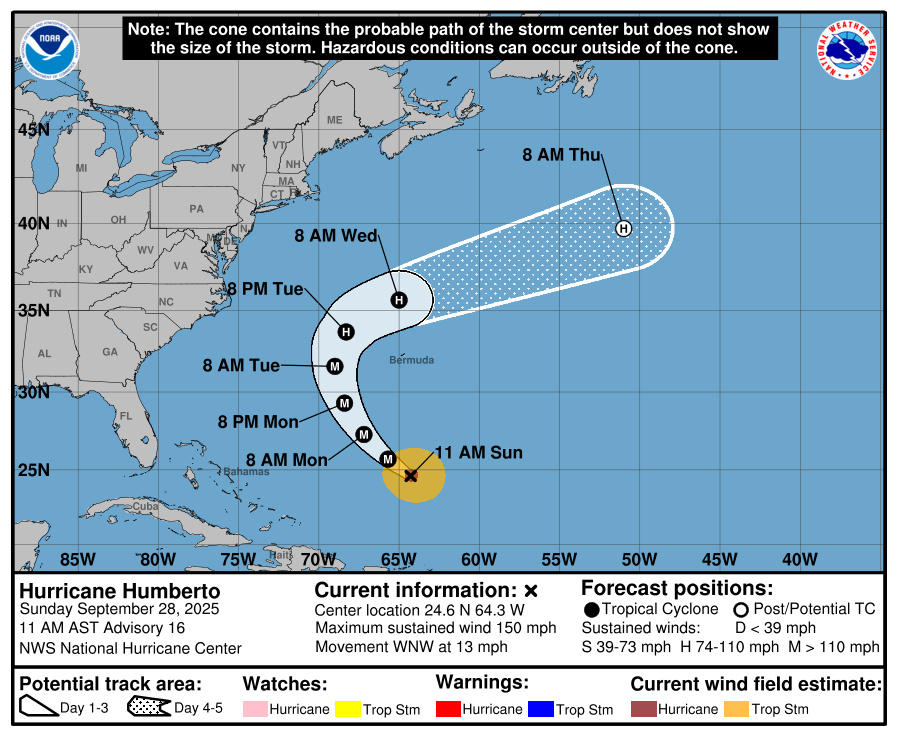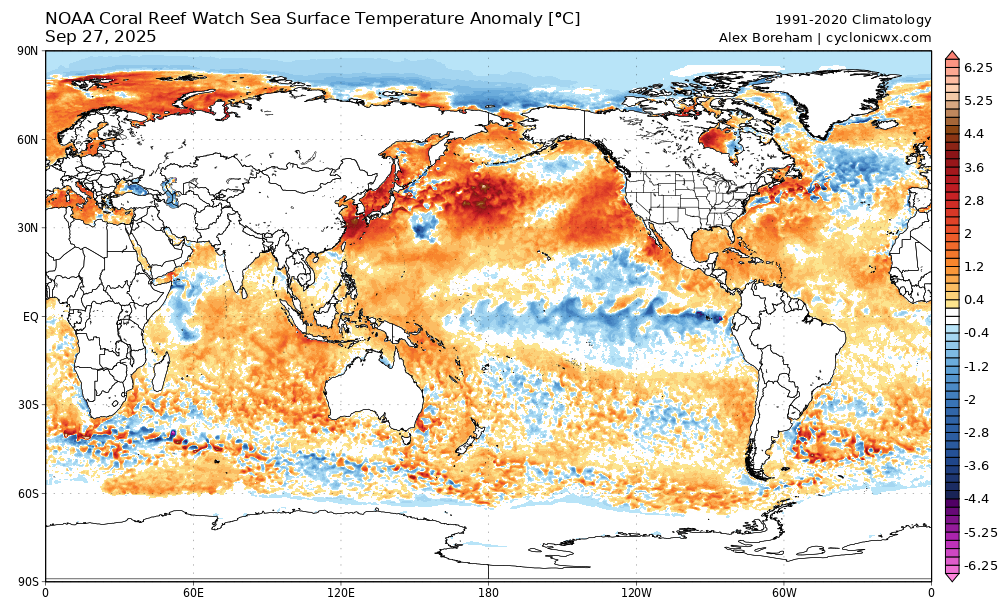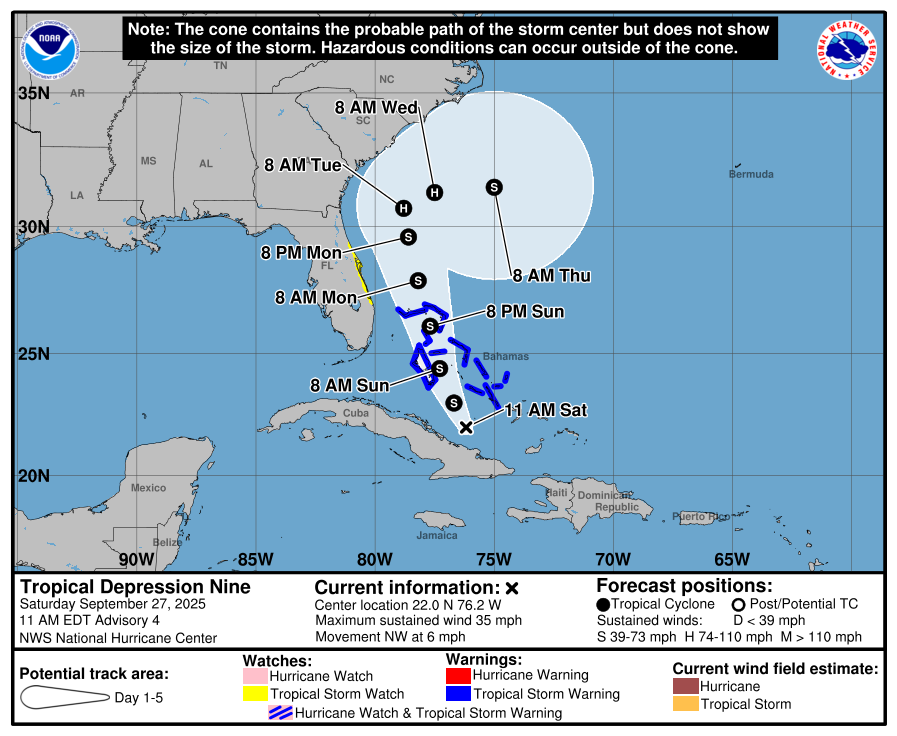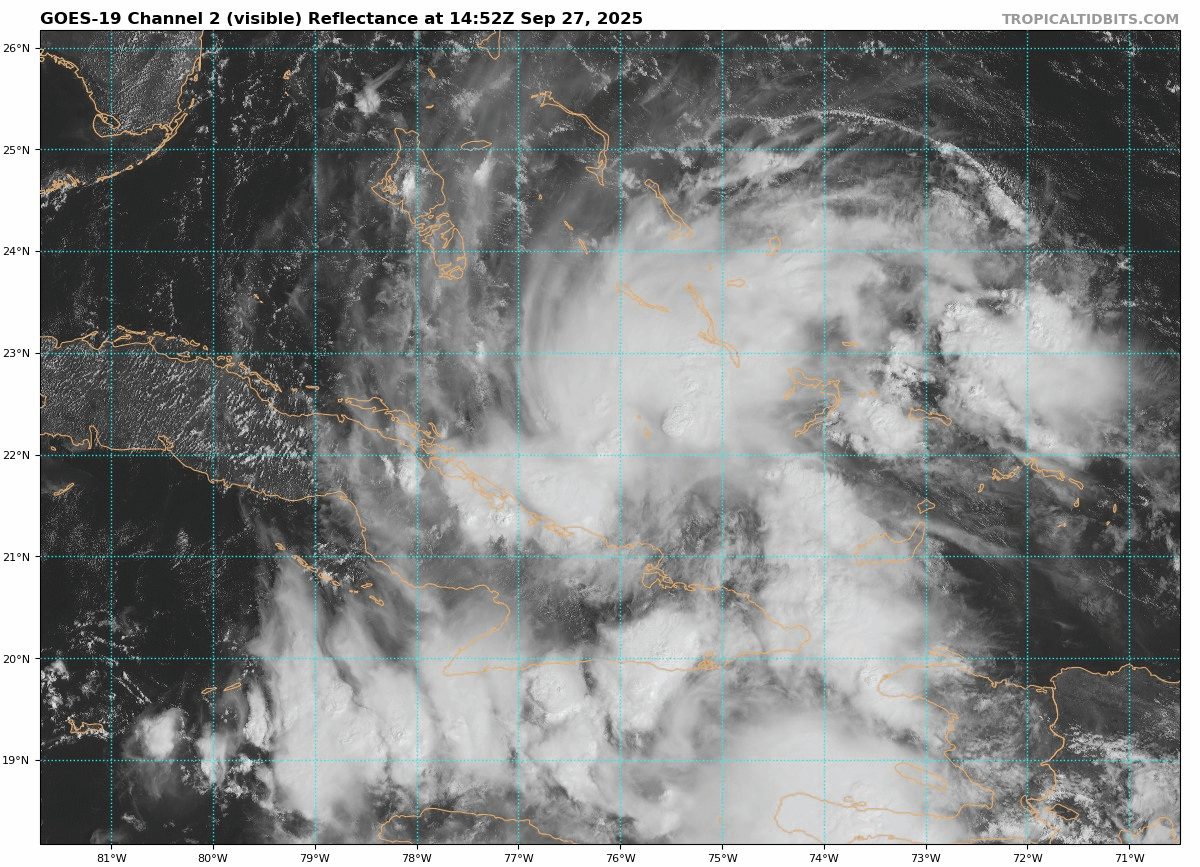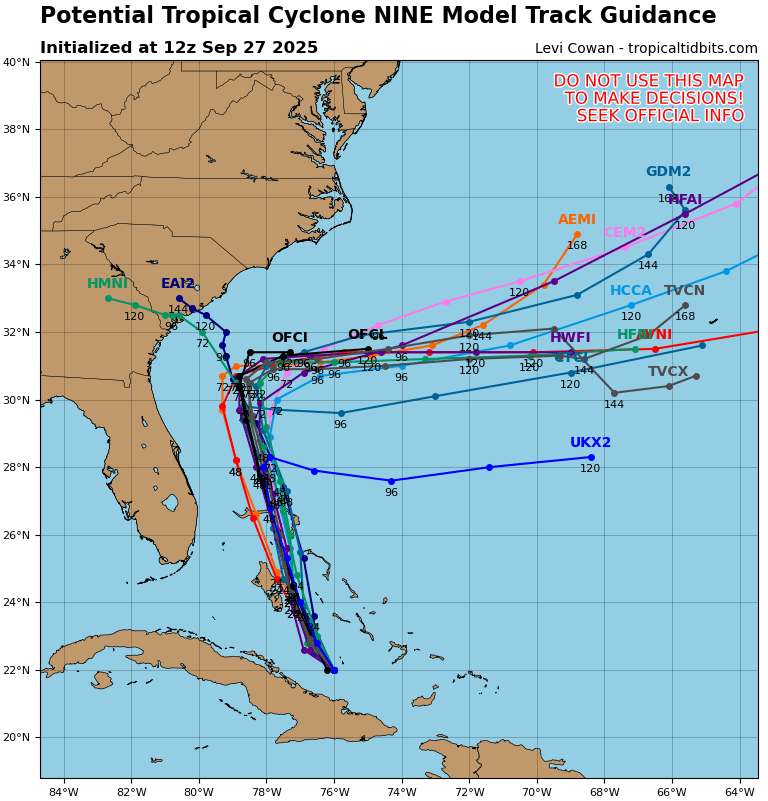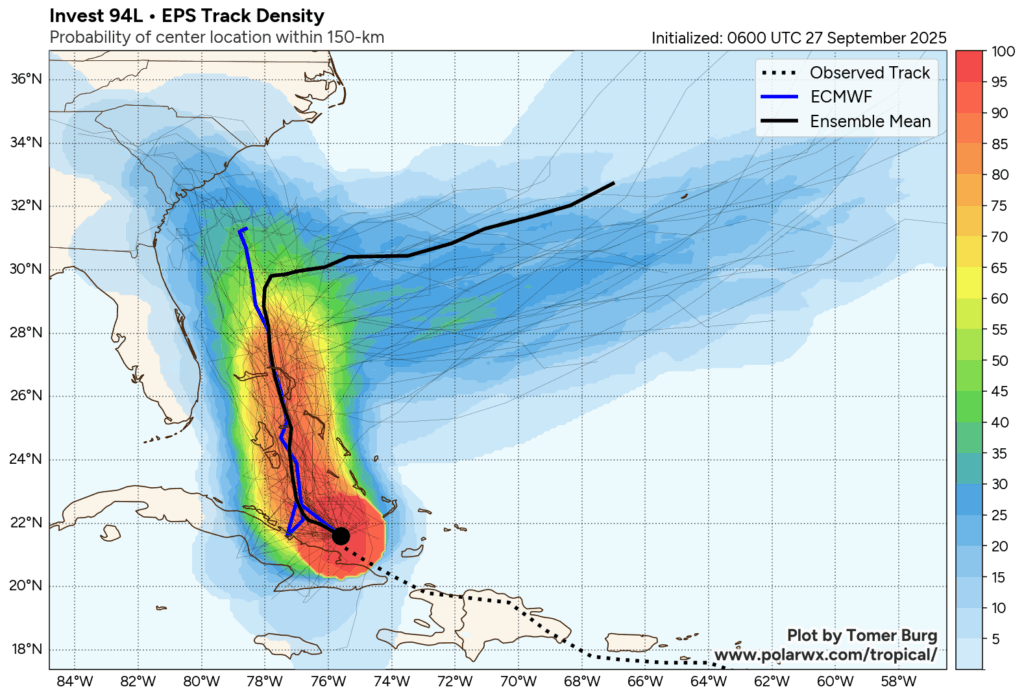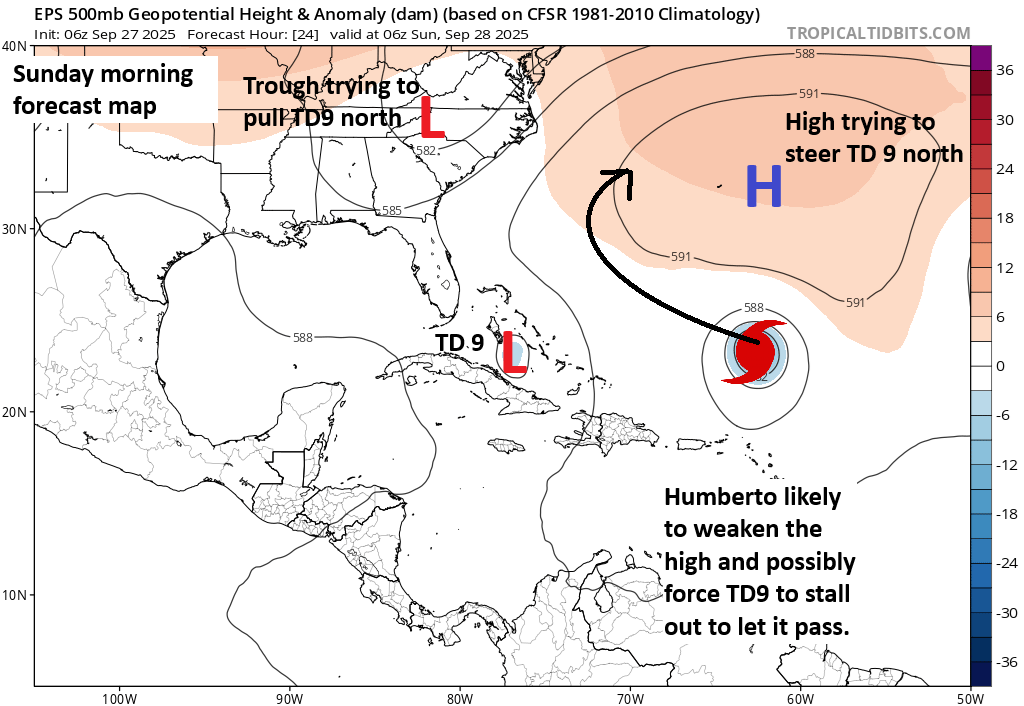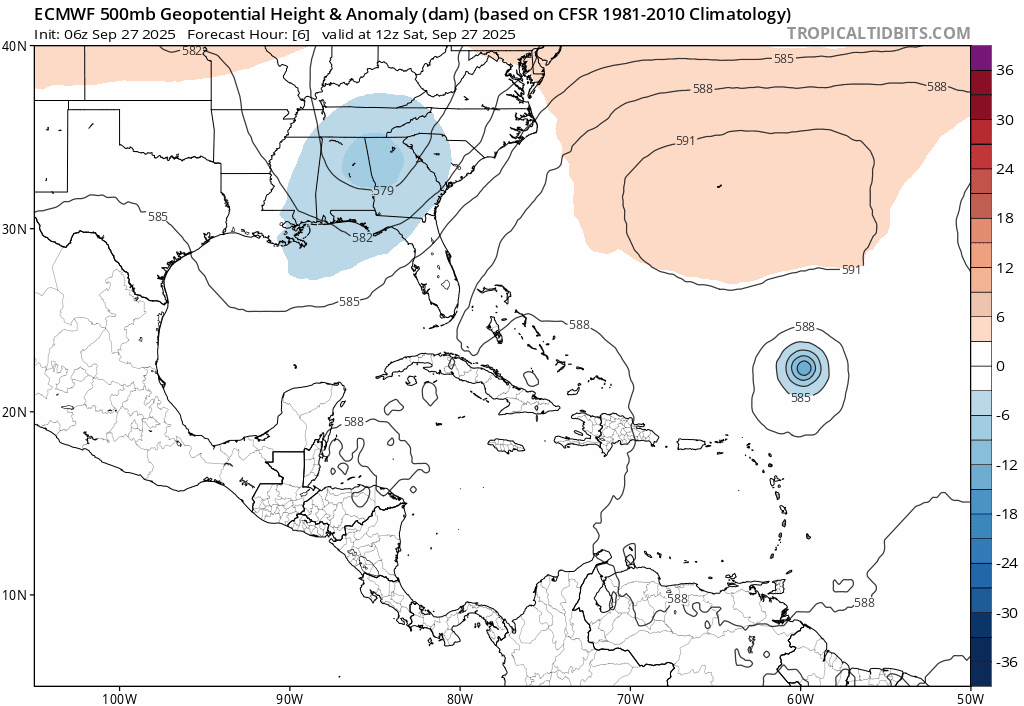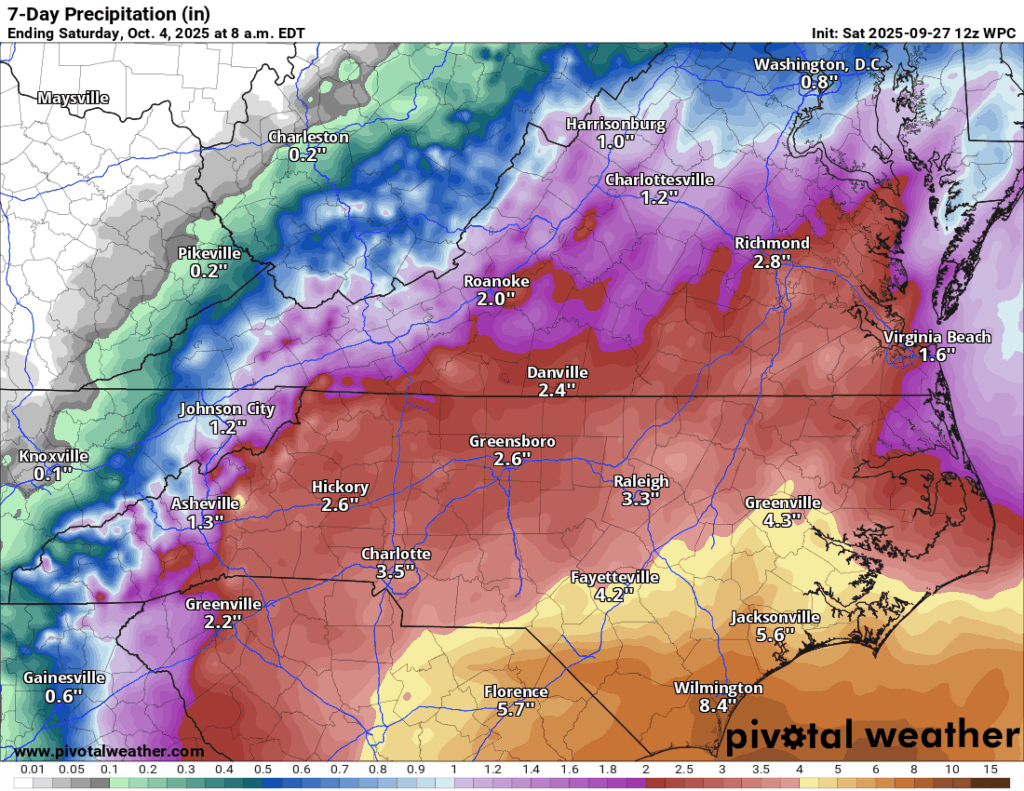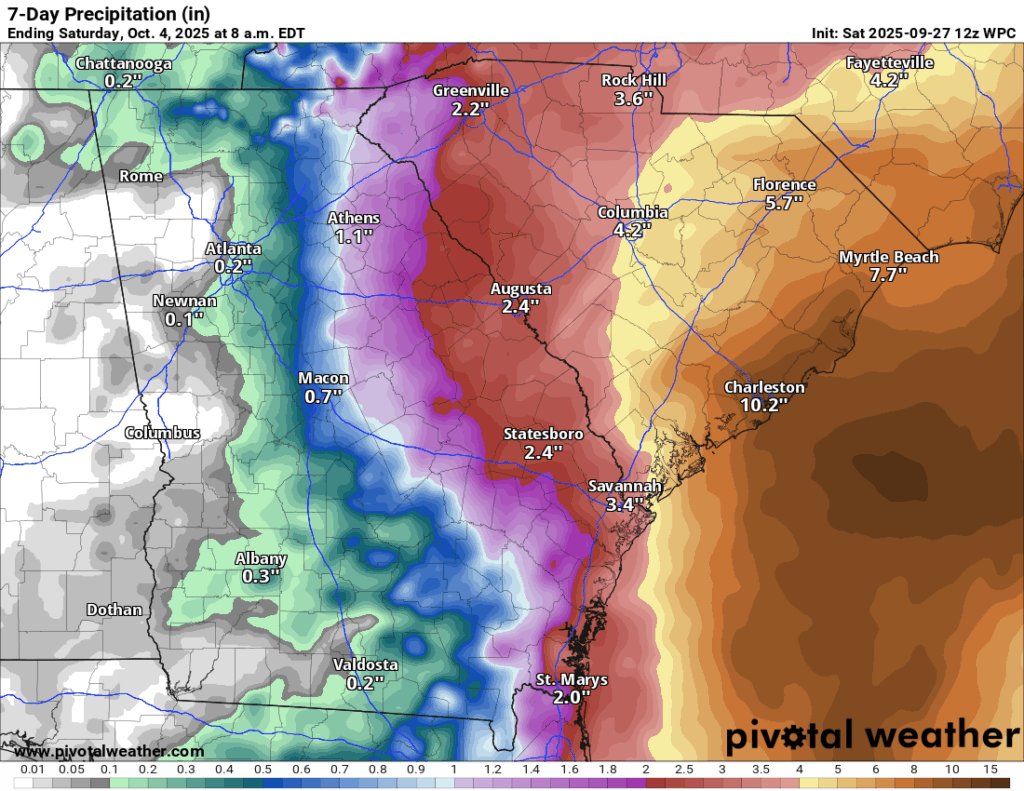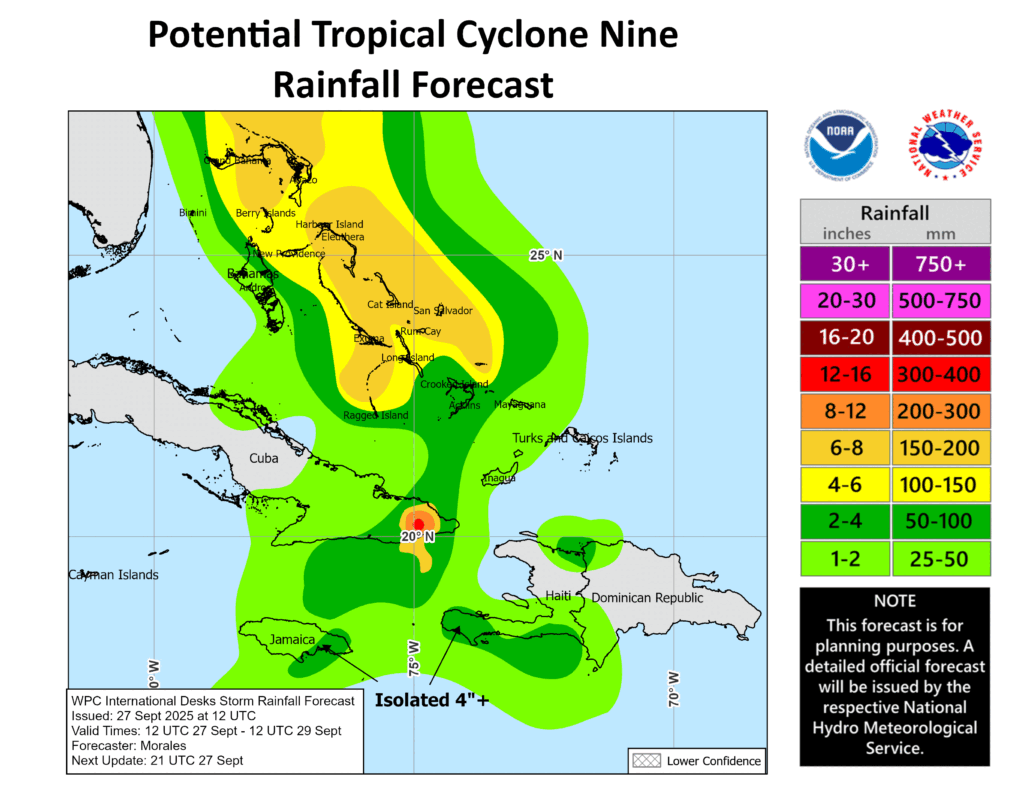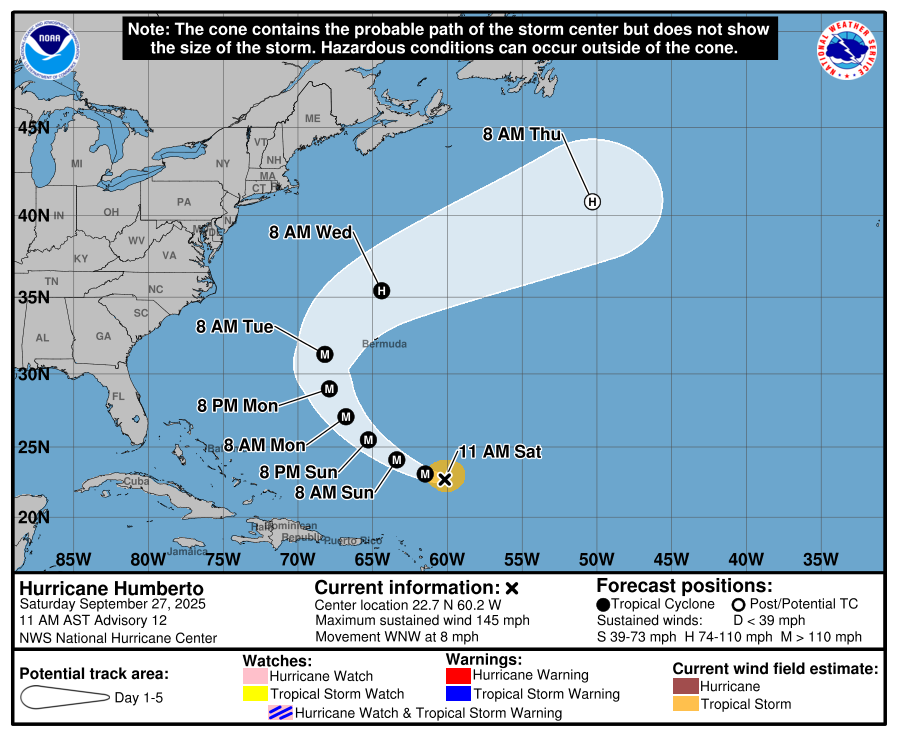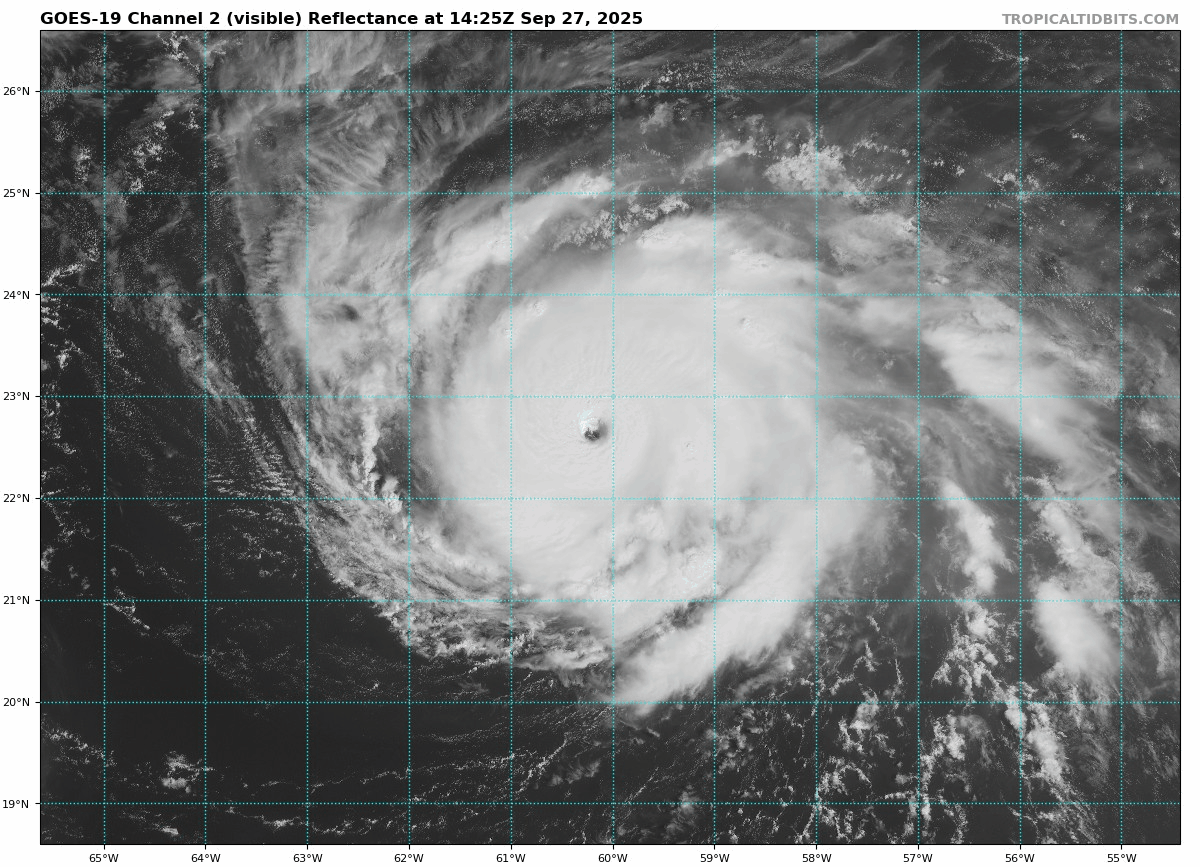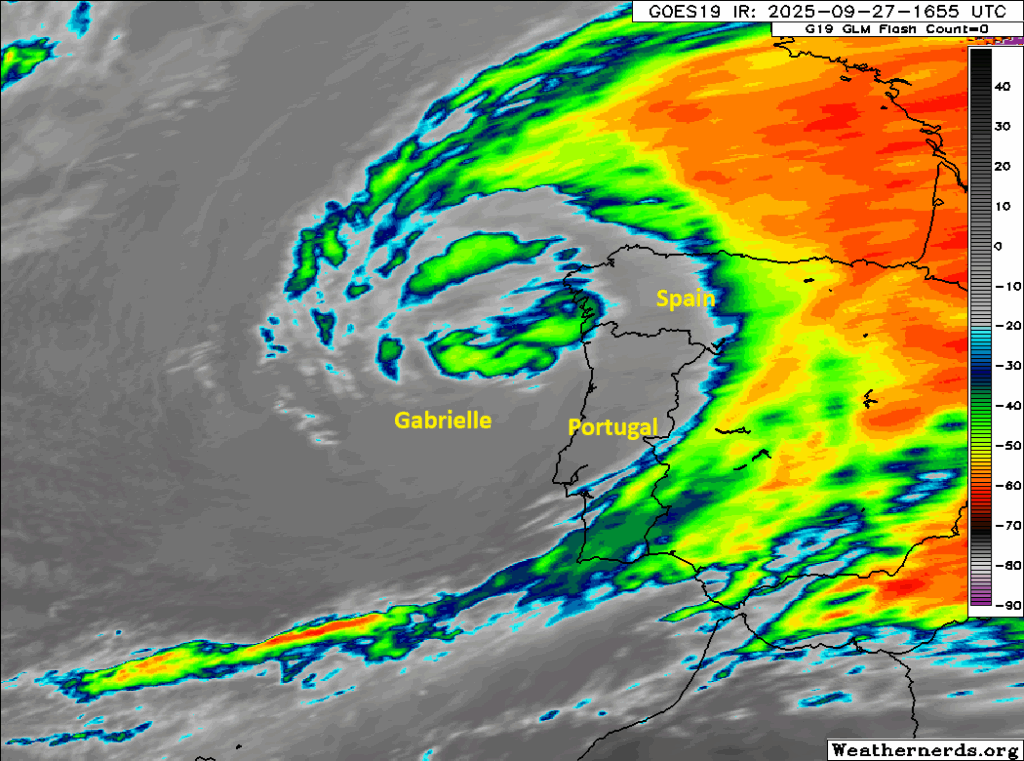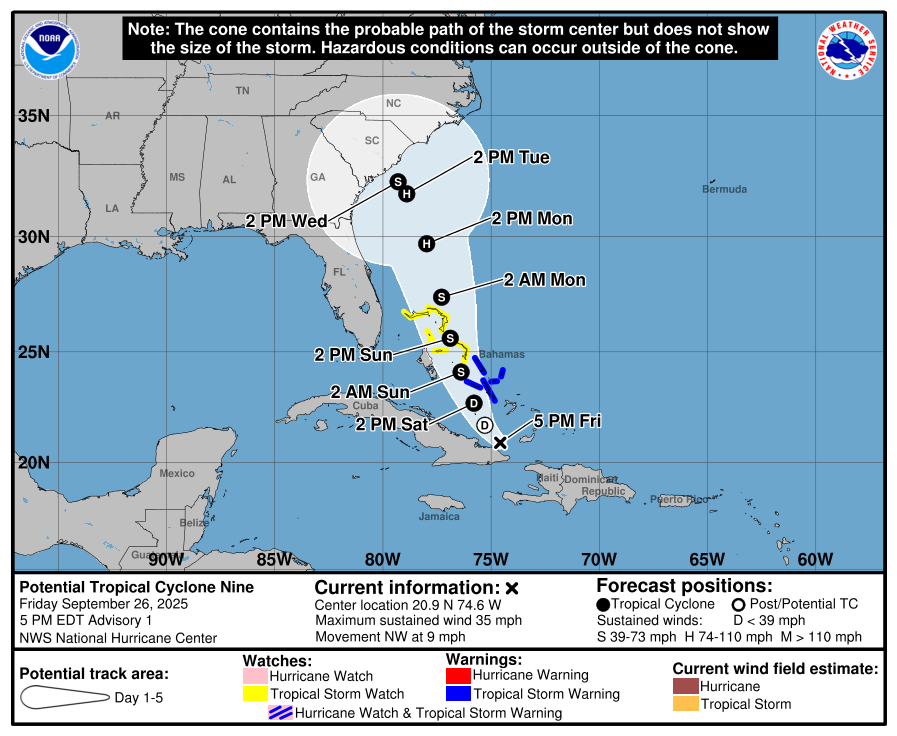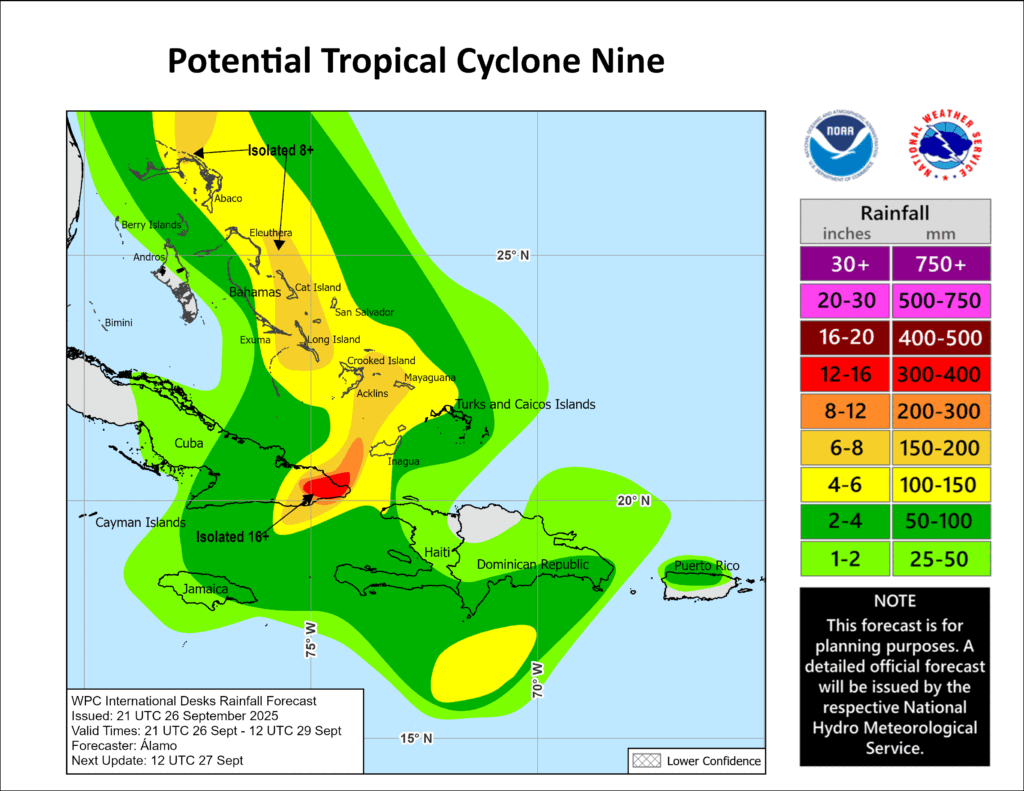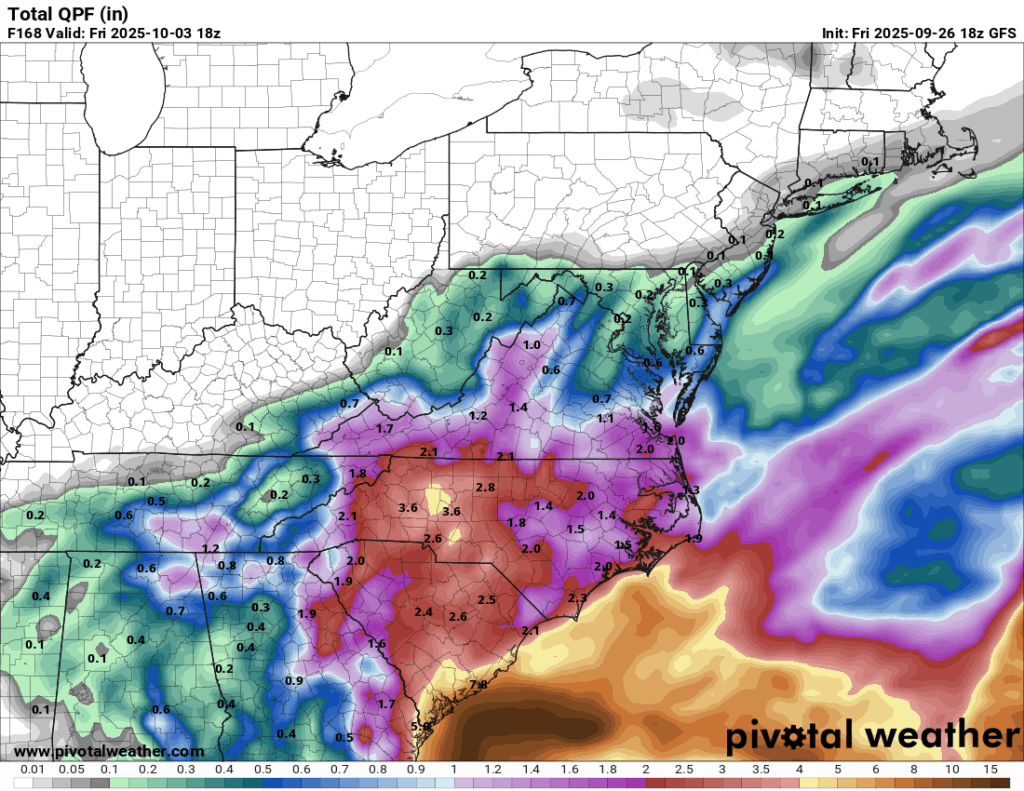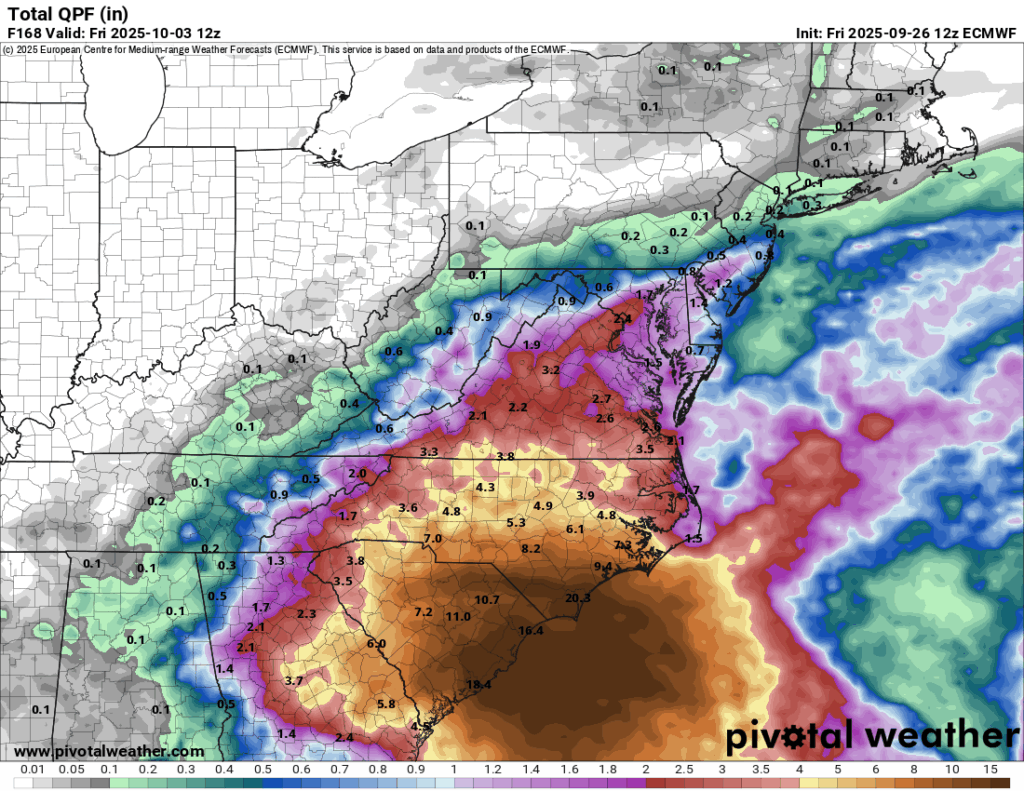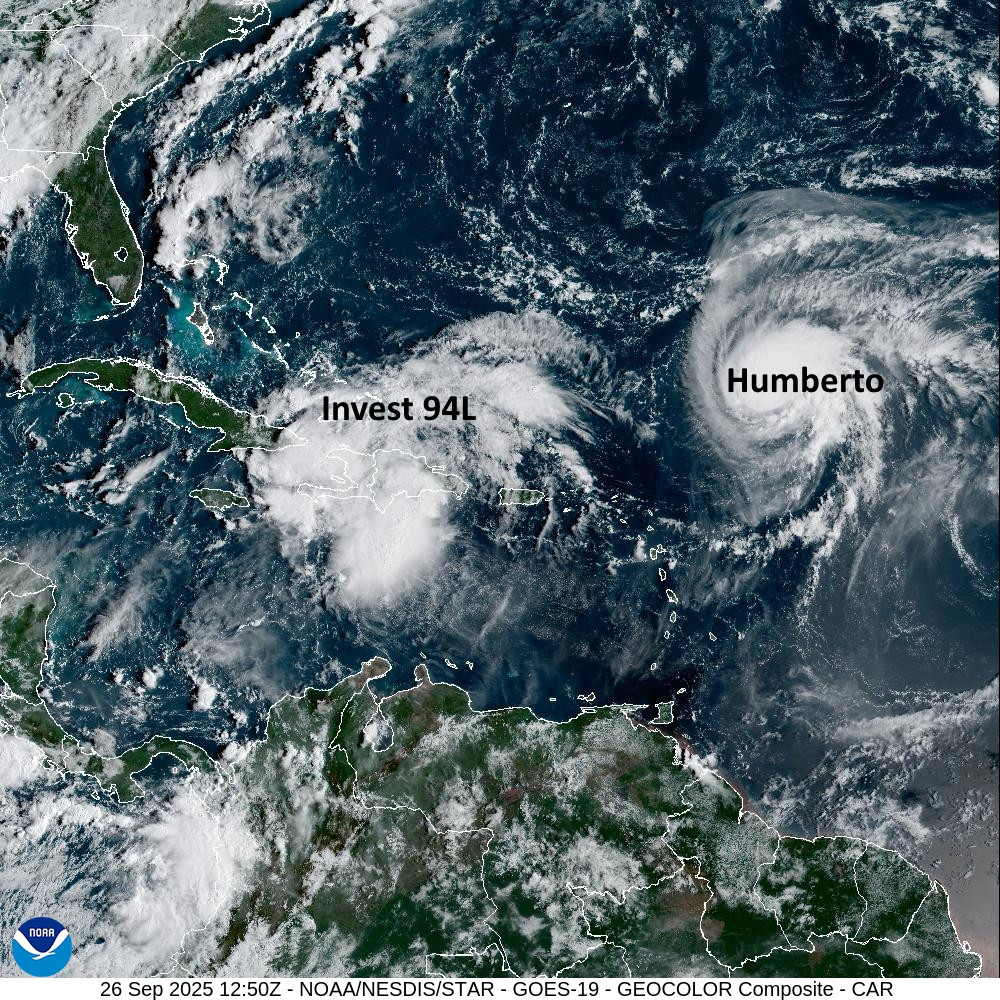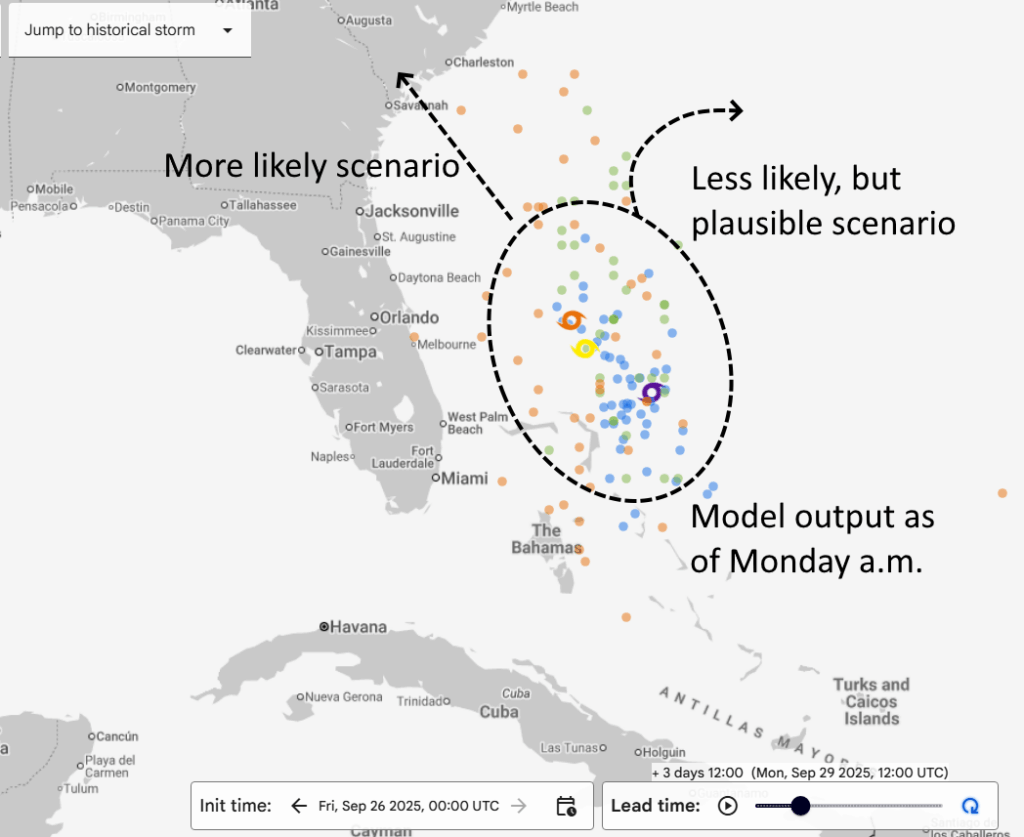In brief: Tropical Depression 9 is still expected to become Imelda by tonight. The track forecast has shifted farther south and east, keeping it farther off the Southeast coast. Still, heavy rain and marine impacts are a good bet on the coast of the Carolinas, but some “stand down” measures can be taken now it appears. Also, today we discuss Humberto’s journey to category 5 intensity and the broader context of a marine heat wave.
Tropical Depression 9
Trends since yesterday have generally been a continuation of trends since Friday, which is to say that threat of a high-end impact to the Carolina coast is diminishing. Friday’s forecasts were far more foreboding in terms of a stalling rainfall event for the region. But since then, all trends seem to have nudged the center of TD 9, presumably Imelda farther from shore. To be clear, this doesn’t mean there will be no impacts, nor any significant ones. It just means the risk of severe, widespread flooding and higher-end wind has dropped a lot in 2 days.
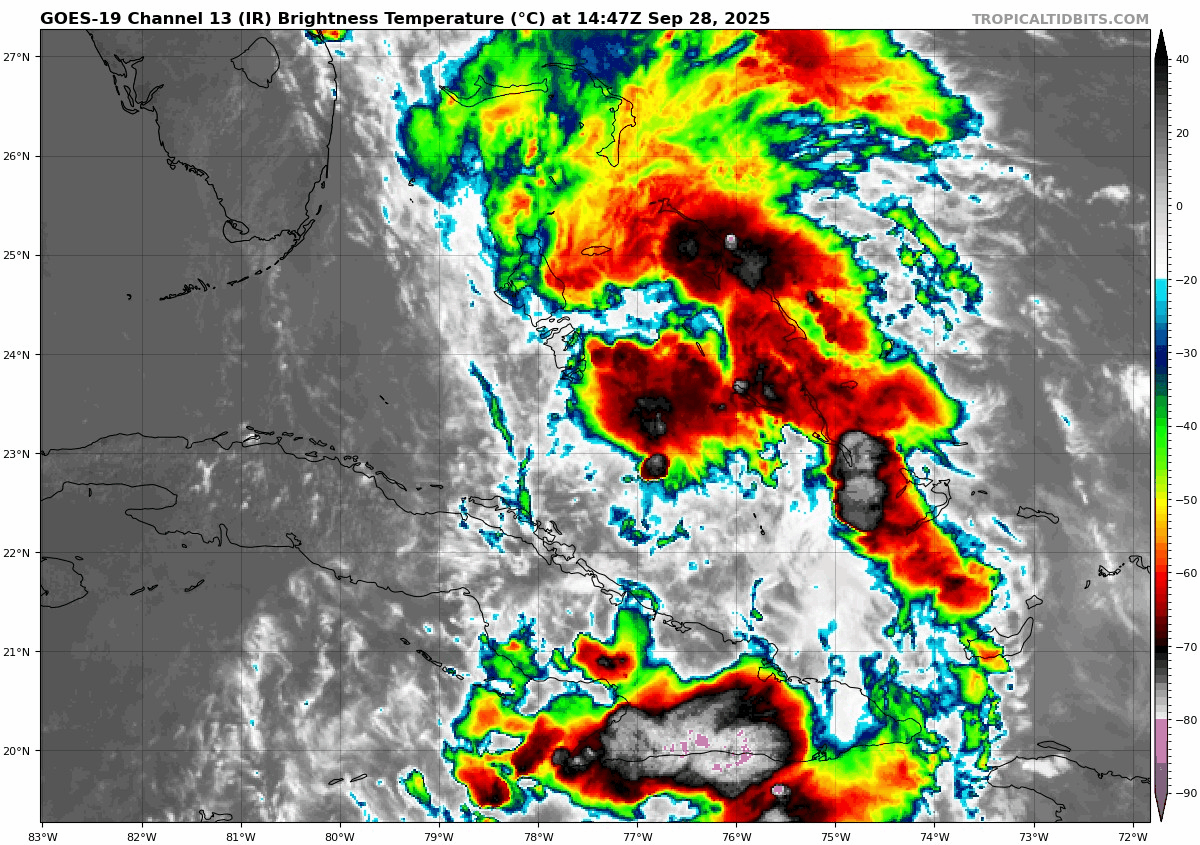
Over the next 24 hours, we do expect to see TD 9 begin to “find itself” in the Bahamas, as many of us probably wish we could also do. Expect a slow strengthening in the next 24 hours, followed by a slightly more aggressive intensification from tomorrow morning into Tuesday, taking TD 9 to Imelda and then a hurricane, possibly a category 2 type storm by later Tuesday or Wednesday. Assuming the wind shear it will likely fend off doesn’t become a prohibitive limit on the ceiling, like we saw with Humberto (more below), we could see this push beyond current consensus intensity forecasts.
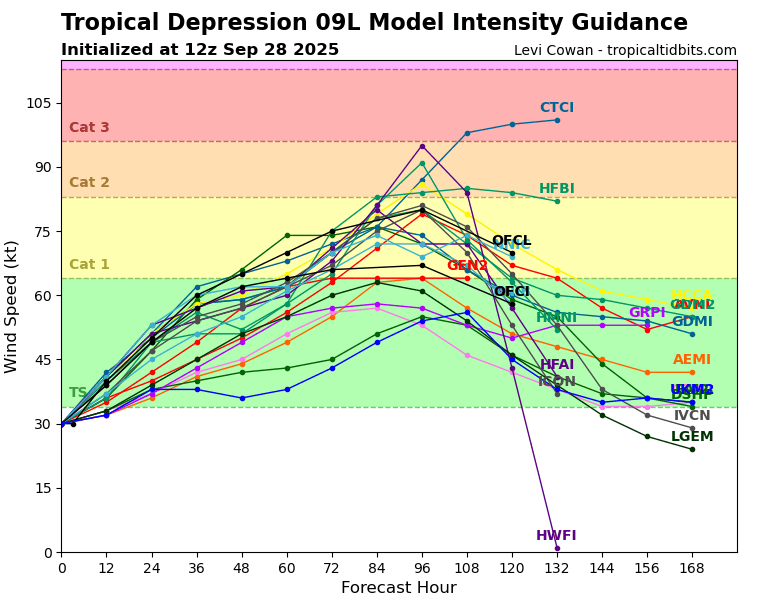
You can see how the HWRF (HWFI) and HAFS-B hurricane models bring this into category 2 or 3 range. With the lumbering Humberto in the vicinity, there’s certainly uncertainty in this, but generally speaking with hurricanes, it’s been like a good old fashioned Big 12 slugfest, and the “over” for intensity has generally won this season.
Model agreement on the track of TD 9 has also increased significantly since yesterday.
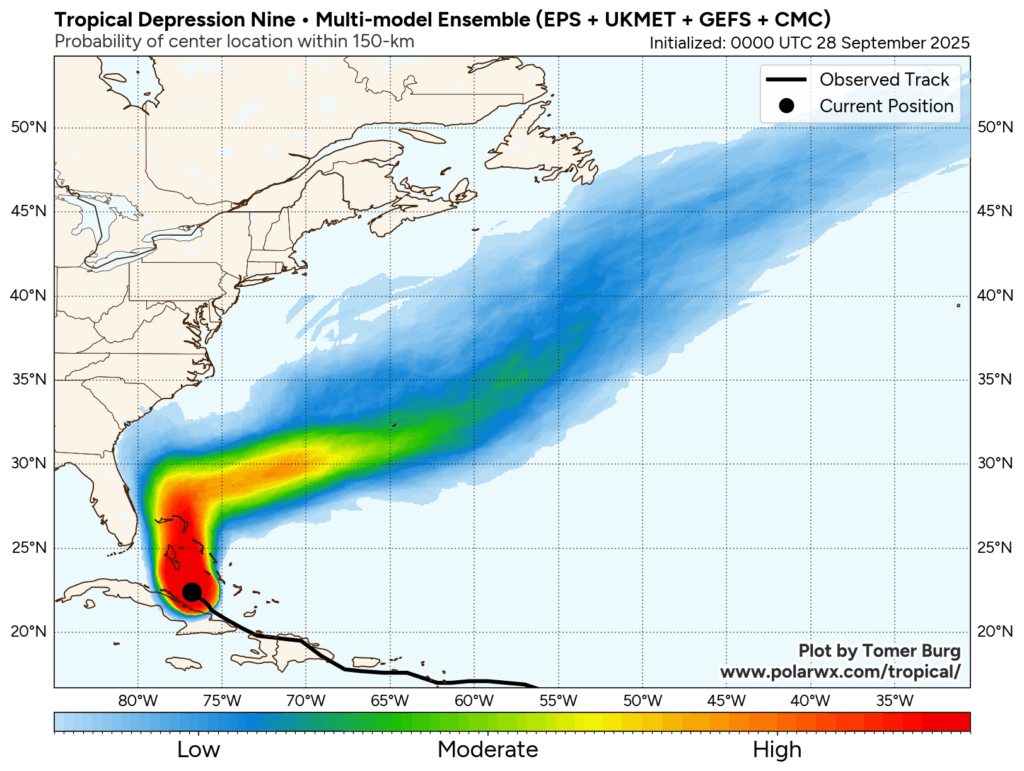
We have far fewer outliers closer to the Carolina coast. Most make a hard right now south of 30°N latitude, allowing it to exit without a ton of consternation. You can also see this reflected in the “trend” of the consensus model since yesterday morning, continuing a trend from Friday.
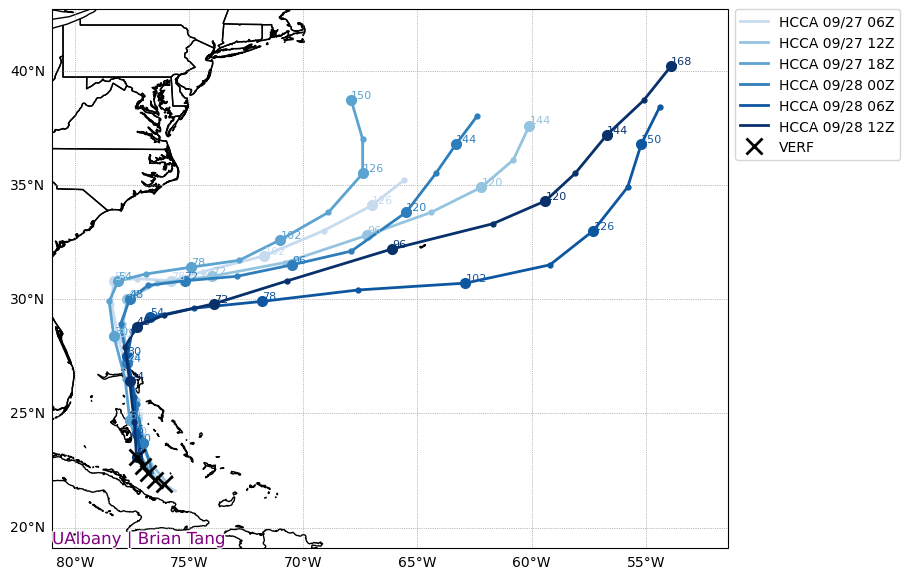
The lighter colored tracks above are older forecasts, while the darker ones are newer forecasts. You can particularly between hours 30 and 72 that there is a sharp deviation to the southeast from older runs to newer runs. Basically, with respect to the Carolinas, TD 9 continues to trend farther away, good news to be sure.
Could this change? Of course. But we really have not seen any reliable model guidance continue to threaten the Carolinas severely. So you should obviously keep monitoring the forecast, but it’s ok to exhale sometimes.
What of the rainfall forecast? Well, the official forecast looks like this:
At least through Wednesday, which should cover about 90 percent of the storm, rain totals are expected to be around 2 to 4 inches in Charleston, Myrtle Beach, and Wilmington, with lesser amounts surrounding that. Some higher amounts are possible, and slight risks (2/4) are in place for flash flooding tomorrow and Tuesday. The NWS office in Charleston has a helpful chart outlining the impacts for their area. Suffice to say, conditions to the north and south of there won’t be terribly dissimilar.
The most significant overall impacts will be marine-related with rough seas from both TD 9 and Humberto churning up high waves, beach erosion, and extremely dangerous rip currents. This will expand up the East Coast in time over the next day or two as well. “Locals season” as we called it on the Jersey Shore should probably involve more observation from land than going into the water. If you’re a surfer, exercise extreme caution.
Interests in Bermuda should continue to monitor TD 9 over the coming days. You’re now in the higher uncertainty part of the forecast, with a track spread mostly south of the island, but close enough to keep you sitting up and paying attention. More to come on this through the week.
Humberto becomes our 2nd Category 5 storm
Since 1980, the era of decent satellite observation, we have had 25 category 5 hurricanes in the Atlantic Basin. Almost half of those (12) have occurred since 2017. Make of that what you will. The newest entrant is Humberto, which surged to category 5 intensity yesterday.
Humberto is back down to a category 4 today, as the eye has filled in some, and it appears to be undergoing an eyewall replacement cycle. Category 5 storms don’t usually stay there for too long, though some have sat there for 3 days (most recently Irma in 2017).
Thankfully, Humberto is still expected to push out to sea without much fanfare other than the wave action it will continue to produce for Bermuda and the East Coast and Bahamas.
Humberto is not currently expected to impact the Azores.
Warm ocean context
I sort of jokingly said “make of that what you will” up top. But the reality is that the Atlantic subtropics, where both Erin and Humberto popped to category 5 this summer are near the top of the scale of warmest on record.
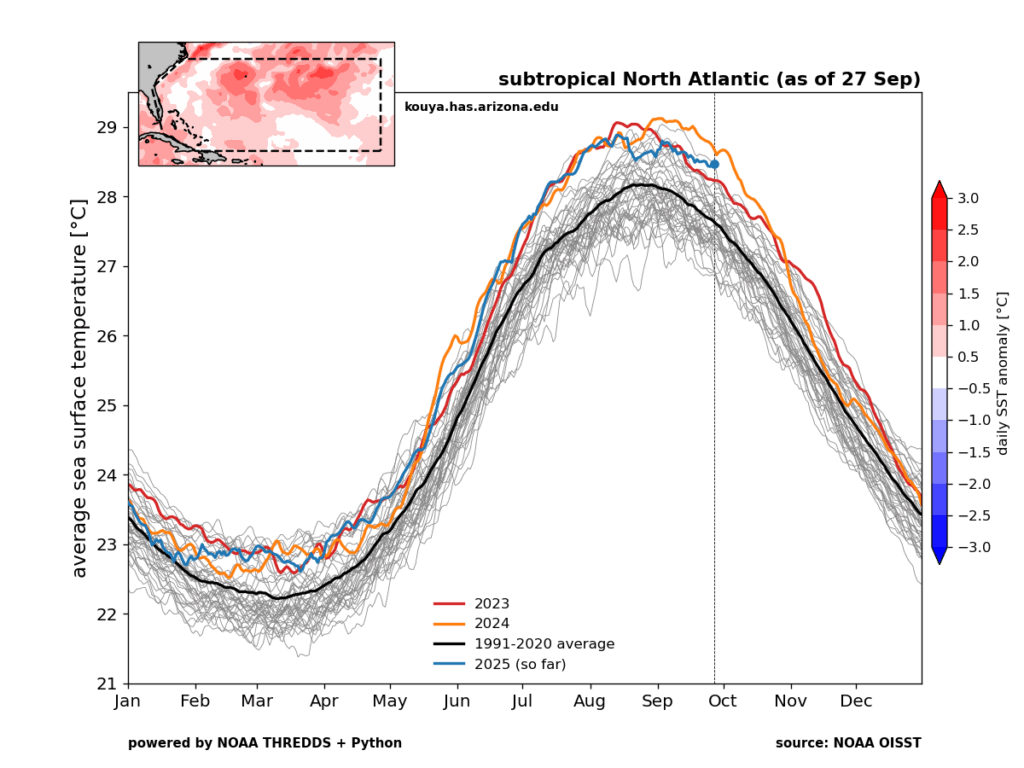
The Caribbean and the Gulf are doing the same, but mercifully we have not yet had a meaningful system there this summer and autumn. And it’s not just the Atlantic. Global water temperatures are about 0.5°C warmer than normal on average. You can definitely pick out some cooler pockets here and there, but the reality is that most of the global oceans are running a fever.
You can see that this is especially true in the North Pacific, eastern Indian Ocean, Barents Sea, Norwegian Sea, Gulf, Caribbean, and subtropical Atlantic. The only meaningful cool anomalies are in the western Indian Ocean, El Niño region (Hello, La Niña?), and far north Atlantic. The North Pacific marine heat wave (colloquially called “the blob”) is a big story, and one that may have further implications on weather heading toward winter. It’s already notable in California.
The reality is that the oceans are continuing a heat wave that began a few years ago, and it’s almost certainly been having some impacts on the intensity of Atlantic storms — and beyond.
